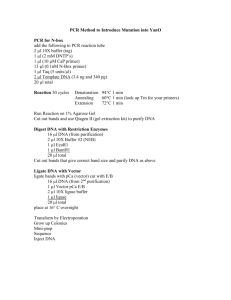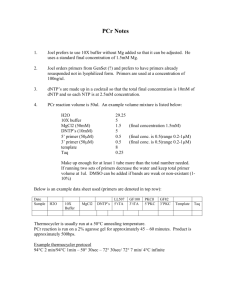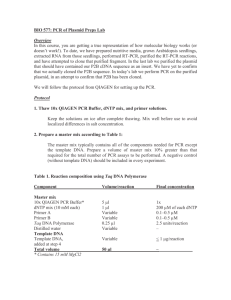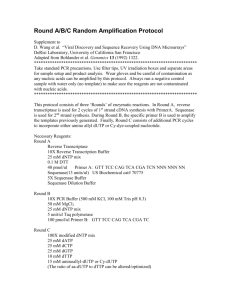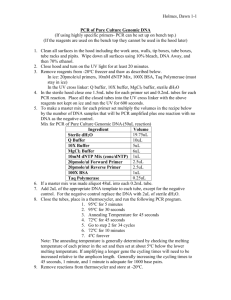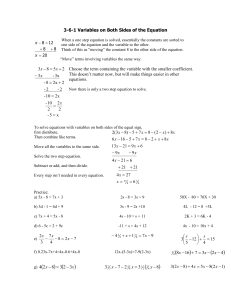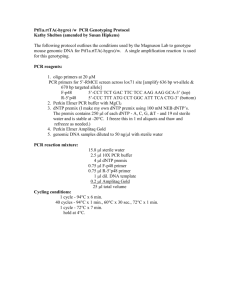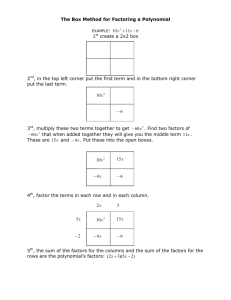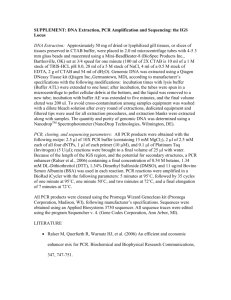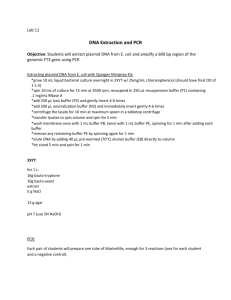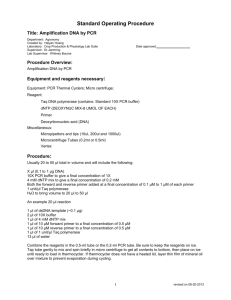Error-Prone PCR
advertisement
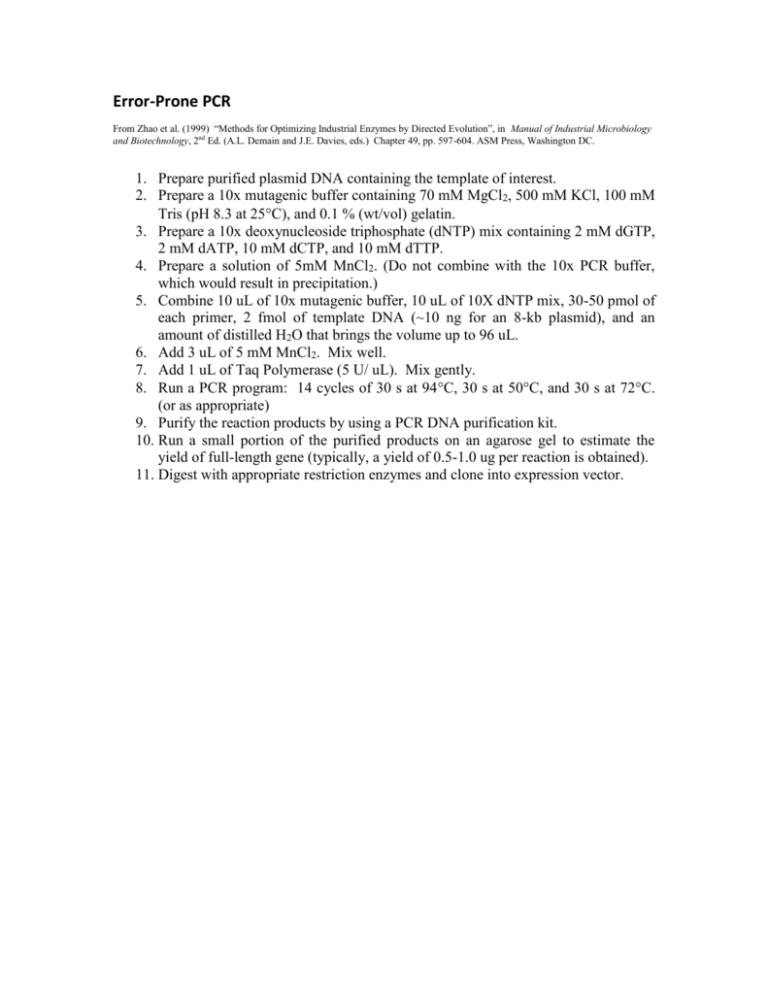
Error-Prone PCR From Zhao et al. (1999) “Methods for Optimizing Industrial Enzymes by Directed Evolution”, in Manual of Industrial Microbiology and Biotechnology, 2nd Ed. (A.L. Demain and J.E. Davies, eds.) Chapter 49, pp. 597-604. ASM Press, Washington DC. 1. Prepare purified plasmid DNA containing the template of interest. 2. Prepare a 10x mutagenic buffer containing 70 mM MgCl2, 500 mM KCl, 100 mM Tris (pH 8.3 at 25C), and 0.1 % (wt/vol) gelatin. 3. Prepare a 10x deoxynucleoside triphosphate (dNTP) mix containing 2 mM dGTP, 2 mM dATP, 10 mM dCTP, and 10 mM dTTP. 4. Prepare a solution of 5mM MnCl2. (Do not combine with the 10x PCR buffer, which would result in precipitation.) 5. Combine 10 uL of 10x mutagenic buffer, 10 uL of 10X dNTP mix, 30-50 pmol of each primer, 2 fmol of template DNA (~10 ng for an 8-kb plasmid), and an amount of distilled H2O that brings the volume up to 96 uL. 6. Add 3 uL of 5 mM MnCl2. Mix well. 7. Add 1 uL of Taq Polymerase (5 U/ uL). Mix gently. 8. Run a PCR program: 14 cycles of 30 s at 94C, 30 s at 50C, and 30 s at 72C. (or as appropriate) 9. Purify the reaction products by using a PCR DNA purification kit. 10. Run a small portion of the purified products on an agarose gel to estimate the yield of full-length gene (typically, a yield of 0.5-1.0 ug per reaction is obtained). 11. Digest with appropriate restriction enzymes and clone into expression vector.
